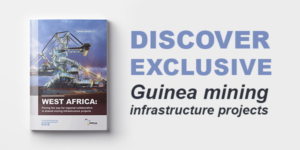The Covid pandemic affected the entire supply chain ecosystem globally.
The Covid pandemic affected the entire supply chain ecosystem globally. Mining, which is critical to the economy, faced its rocky road. Amid these adversities, an extensive majority represented by the 40 top mining firms in the whole industry aggregated $656 billion to the world’s economy in the year 2020. ( 2020 Statistics)
Mining is pertinent to the propulsion of the economy. If well approached, can be used as a catalyst to propel social status, more so at the community level.
Mining is among the few industries that assure renewable energy in the future. Historically, the mining industry has been providing Sustainable Development Goals through; (i) Creating employment for high-paying decent job opportunities. In Africa, the industry has approximately 45 million supportive positions and 8 million direct jobs, whereas the mineral industry offers about 1 million jobs in the United States (ii) Availing undiluted materials and minerals which are essential to saving lives. Some of these minerals are used to operate scan machines in hospitals. (iii) A considerable sector of the economy e.g., automotive, technology, construction, and health rely on minerals hence stimulating economic growth. (iv) Increased government revenues. (v) Linkages to various infrastructures such as haul roads, rail, port, water drainage systems, power, and ICT that exclusively serves mining operations.
Illegal mining, among other challenges witnessed in the past, has made sustainability seem inconceivable. How, then, can sustainability be improved, you may ask; the birth of the digital world has made production and manufacturing endurable.
One aspect is economical sustainability.
There is a fallacy that mines have a limited supply that, once exhausted, becomes nugatory. This knowledge is delusive. With tech, mining companies have found ways to replace depleted reserves and rehabilitate the mining sites. With technology, workers can extract resources with minimal impact on the environment. The use of Artificial Intelligence (The Al) has made a huge impact on the industry, leading to high production at low cost. Another way is by recycling and reusing the materials made from mining, which improves their benefits significantly. Investing the proceeds from mining into other economic spheres like education, health care, and real estate among other investments. This can act as a catalyst for social sustainability. In principle, the economic benefits created by mining can be sustained indefinitely through appropriate investments like education, health care, infrastructure, and other activities that can create well-being long after retirement. In other words, a depleting mineral resource can, in effect, be converted into a sustainable, renewable source of human well-being through appropriate investment.
Environmental Sustainability
Abrogating illegal mining sites is the first step in making mining environmentally sustainable. These mining sites compromise the ecosystem. Mineral revenues are lost due to smuggling, destruction of both the surface and underground water streams due to toxic contamination, food insecurity due to land disruption, and lack of proper equipment emphasizing air and noise pollution.
These notable negativities can be curbed. A critical step would be for the governments to be assertive in the provision of mine closure plans before issuing new permits. From past experiences, there has been a notable observation that lack of these policies can cause negative lasting social, environmental, and economic effects, more so to the local communities. Asia-Pacific Economic Cooperation (APEC) tabulated a Mining closure checklist for the various governments dealing in the industry. (Mining Closure Checklist )Water and air purification will be achieved by developing water conservation methods, as has been the case in Canada. Proper decomposition of waste materials, reducing energy consumption, and restoring the environmental function of minefields can create a healthy environment for future generations.
Social-Cultural Sustainability
Child labour, (UNICEF Report on Child Rights and the Mining Sector) gender inequalities, “The widespread expectation that strong performance requires availability and mobility at any time burdens women in contexts where gender stereotypes are consciously perpetuated since it frequently means that men are offered opportunities over women, who are assumed to shoulder housework and caretaking responsibilities, even though this might not be the case” (International Labor Organization Report Women in Mining) and violence are among the social negative impressions that have been associated with mining historically. Health and environmental factors including but not limited to deforestation and pollution, have created a need to address and integrate these factors. Mining can be socially sustainable by developing and integrating competitive practices at all levels. These practices include social protection and social equity. For the longest time, low or lack of education, economic stagnation, and depopulation have been major hindrances, and therefore there’s a call to the industry’s exposure and to focus on public awareness.
Africa is known to be the home of 30 per cent of the globe’s total mineral reserves. In most Sub-Saharan African countries, mining has immensely contributed to exports, foreign exchange, and government revenues but still faces the risk of continuing to be dependent on mining due to precarious policies.
Listed below are the top ten African countries making Africa a hub for minerals. The country with the most mines and minerals leads from the top.
- South Africa
- Nigeria
- Algeria
- Angola
- Libya
- Egypt
- Ghana
- The Democratic Republic of Congo
- Gabon
- Zimbabwe
It is interesting to note that Zambia, a landlocked country located in the South-Central of Africa, does not appear among the top African countries with minerals despite being recognized Internationally as one of the major producers of copper (ranked 7th) and cobalt (ranked 2nd) Zambia also produces gemstones, such as aquamarine, emerald, amethyst, and tourmaline. In this great country, be assured of finding precious metals (gold and silver) and other industrial minerals.
For Zambia, copper is the most important natural resource. Being the major country’s export accounting for 60% of Zambia’s total export generating 45% of the government’s revenue. In the whole of the African continent, it stands at 70% just exporting copper alone. Richly as it may be enriched with these minerals, Zambia, together with The Democratic Republic of Congo remain the only two mining countries with the highest tax rate in Africa. The Zambia Chamber of mines, during the last parliament sitting (7th Sep 2022), demystified to the stakeholders that the tax regimes are not tax exemptions.
Apart from the punitive tax rates, the Artisanal and Small-Scale (ASM) mining sector are facing several challenges. Due to humble background, accessing basic tech devices in the mining process is an uphill task, coupled with lack of access to finance and basic geographical information.
This year, Zambia’s mid-year copper production figures went down by 7.17%. The downside is attributed to operational challenges and the heavy rains experienced in the North Western province. The heavy Kwazulu Natal floods of South Africa was a big blow to the supply. A conference scheduled for November 1-3rd 2022, at Kitwe, Zambia, one of the agendas is “Developing Sufficient Sustainable Energy to Satisfy Zambia’s Mineral Production Goals” See Here. This will be a stepping stone to cubbing such challenges in the near future.
Just like Zambia, Guinea does not feature among the top despite being endowed with bauxite. Guinea boasts the largest world reserve of bauxite, with an estimated 7.4 billion tons. This mineral is extensively used in manufacturing aluminium which is used in both the food and automotive industries. It is ranked 1st largest producer and 6th best in producing quality bauxite. Guinea is the major exporter of bauxite to China. Bauxite mining and alumina production largely contribute to the country’s 80% foreign exchange. The United States is among the major trading partners in iron ore and bauxite.
In 2019, Guinea was ranked 3rd as the biggest bauxite producer in the World. (The Global Economy) Among the top exports in Guinea are gold, silver, crude petroleum, aluminium ore, aluminium oxide, and non-fillet frozen fish. Despite petroleum being among the vast exports and contributing fairly to the gross domestic product (GDP), farming is still predominant, and the living standard has not improved significantly.
With the demand curve rising, Guinea is confident that bauxite export will continue growing. It has since become a major exporter in recent years exporting to China, Germany, Ukraine, Ireland, and India, among others.
Like most Sub-Saharan African countries in mining, Guinea is also affected by challenging trade policies which makes trading in the industry a rough patch. The mining Ministry however, is working on putting into place policies and reforms that will see the industry gain its lost glory.
In 2019 and 2021, the sector started distributing mining profits to the local government for the very first time.
These and many other issues are discussed in detail during our in-country events, such as SMG in Guinee and ZIMEC in Zambia. Register here to find out more about our past events, post-show reports and other upcoming conferences.






